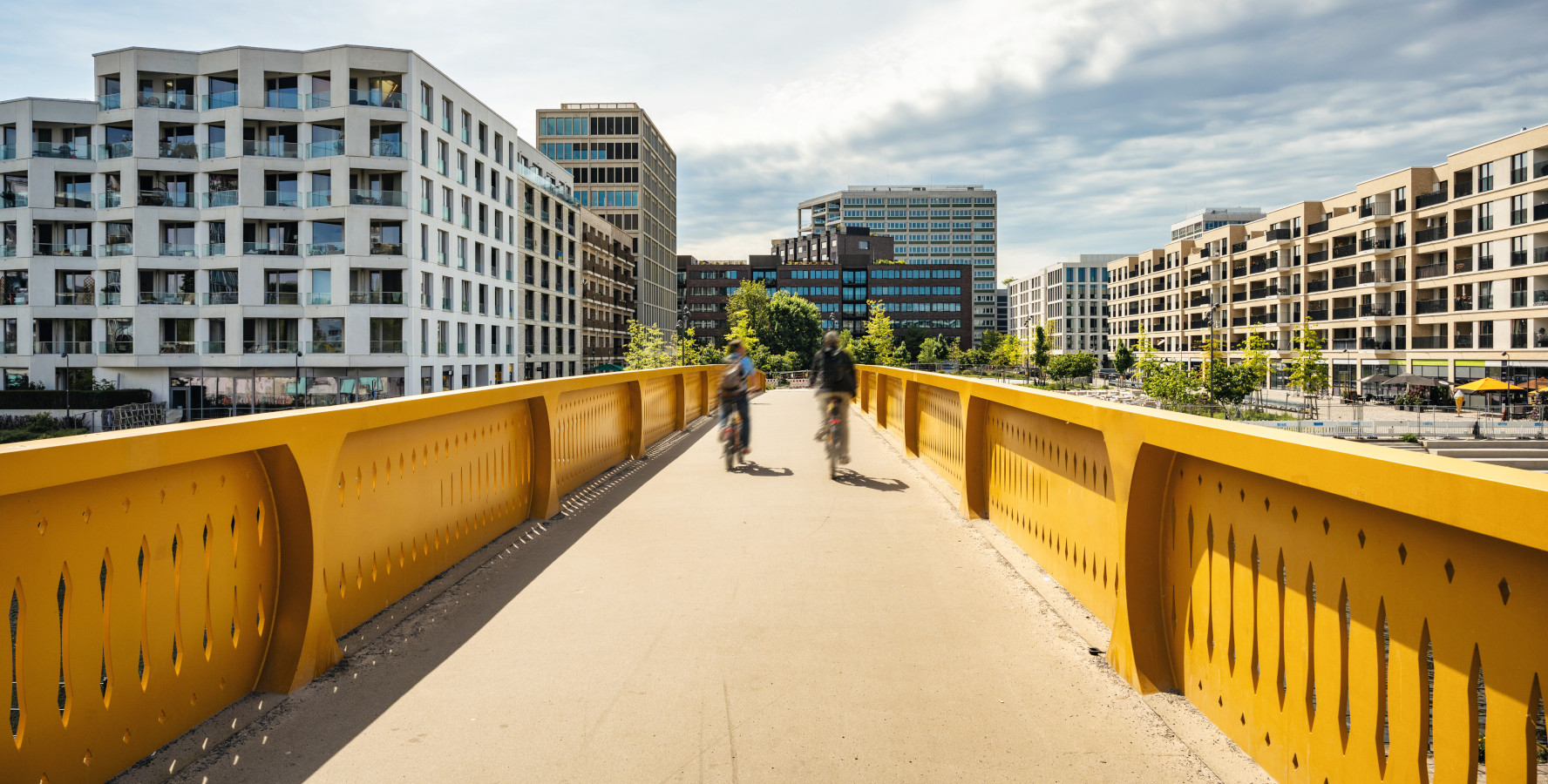In 2026, London’s Migration Museum will open in its permanent home in the City of London. Set across three floors, the museum will provide 30,000 sq ft of exhibition and events space dedicated to the stories of people who have moved to – and helped shape – Britain. Alongside a museum cafe and shop, the development will also feature student accommodation.
Developer Dominus Real Estate will underwrite the museum’s first three years of operating costs – as well as donating a proposed £500,000 to cover staff costs.
In many ways, this development is at the forefront of social impact real estate; its societal purpose is written into its blueprints. However, many developers, investors and other stakeholders are yet to make the mental shift of viewing social value as an investment, not a cost.
The four stages of social value adoption
It’s hard to put a price on something as intangible as the value real estate can bring to a community. A decade ago, however, environmental concerns – the E of ESG – also felt nebulous and unquantifiable. Now, they are a business imperative. At Savills, we believe this comes down to a four-stage journey of adoption.
1. IMPORTANCE: responding to a need
Growing awareness of climate change and Earth’s dwindling natural resources has pushed environmental sustainability into the spotlight, forcing everyone, including the real estate sector, to see it as an integral component.
Now, social aspects of ESG have gained prominence in real estate. Global social issues including poverty, a lack of affordable housing and growing social inequality are forcing stakeholders to recognise that their investments have a broader, deeper impact on society – and it can be a positive one. Socially responsible practices can and should be embedded into the way real estate businesses operate and buildings are run.
“The concept of a building’s environmental footprint is widely understood. Now we need to consider the societal footprint of real estate as equally fundamental,” says Wesley Ankrah, Director of Social Value at Savills. “How can investors foster inclusive and vibrant communities, promote social equity, and address issues such as affordable housing and access to healthcare, education and jobs?”
In commercial real estate, social value may come from recruitment – by hiring ex-prisoners, for example, or encouraging more women back into the workplace post-maternity leave by providing on-site creches. Offices, already in transition post-pandemic, can build more flexibility into their offering to attract the best young professionals, who increasingly judge prospective employers according to social benchmarks.
In the US, Alliance’s rent-to-buy scheme gives middle-earners the chance to rent their homes for 20% less than the market rate. The money they save over the first two to five years goes towards the deposit for a mortgage. Alliance’s developments target areas with blue- and grey-collar employment opportunities, good schools and transport, but a lack of good-quality housing.
By integrating social considerations like these into their real estate strategies, investors enhance the reputation and brand value of a scheme, help build sustainable and liveable urban environments, and create value in the real estate sector. This helps de-risk future developments at the planning stage, because their social impact – and social value – can be tangibly demonstrated.
2. ACCEPTANCE: from ‘nice to have’ to necessary
Environmental concerns used to be met with scepticism. That ended when the connection between human activity and the degradation of the planet became impossible to ignore.
This shift in perception was driven by the development of benchmarking tools that could assess and compare the effect of environmentally sound construction on asset value and performance. Investors who do not acknowledge the environmental impact of their buildings now risk falling behind the competition.
It may well be a similar story for social value in the coming years. Those who recognise the importance of investing in ways to address societal problems can be ahead of the curve – as were the investors in and architects of the first BREEAM-certified buildings. Top-down acceptance, a recognition that servicing the local community’s needs can be financially as well as socially beneficial, as well as demand from occupiers can help to make this happen – and drive occupier demand too.
Meanwhile use, for example, whereby developers allow temporary or “pop-up” use of the space before more permanent tenants move in, can help engage the local community before the scheme has even reached the planning stage. This could help the reputation of the real estate industry. It also helps to build trust and positive relationships with the local community.
3. MEASURING AND QUANTIFYING: a sticking point
The question of how to measure social value is a sticking point. In Asia, Sam Crispin, Senior Director of Regional Sustainability & ESG, comments that – while developers and asset managers have long made efforts to invest in the local community – “what remains rare is a more strategic approach of goal-setting, input measuring and outcome recording”.
In the UK, there are multiple methodologies that specialise in different areas of social value, based on HM Treasury green book guidance for how to appraise policies, programmes and projects, but their lack of a common language causes confusion.
There’s the Social Value TOM System, a useful starting point for calculating cost. This is widely used by local government, but it doesn’t yet allow for a deeper assessment of impact. There’s also HACT (Housing Association Charitable Trust), the charity for the social housing sector, which uses the UK Social Value Bank as its barometer and focuses on individual wellbeing as the biggest determinant of social impact.
Loop, a social-value calculator, helps organisations devise their social value strategy using the National Social Value Standard (SVS). And Thrive, a software platform that uses the Impact Evaluation Standard, considers 121 metrics to help businesses put a more concrete value on their social value activities.
However, because they may not be relevant to – and therefore comparable across – all projects, their reach and usefulness is limited. Unlike environmental impact, which is more binary in its assessment, social value is about benefit to the community – and every community is different.
Some countries have launched open-source social value banks. The Australian Social Value Bank (ASVB), launched in 2017 by not-for-profit social enterprise Alliance Social Enterprises (ASE), has produced the most consistent set of social value metrics to date. Melbourne-based architect Hayball teamed up with ASVB in 2022 to conduct an award-winning pilot study that used quantitative and qualitative data to demonstrate how their designs could impact the users of their buildings.
In Italy, the Social Value Italian Association focuses on the social impact of culture-led urban regeneration initiatives, to ensure they have a lasting, revitalising impact on urban neighbourhoods. It found that regeneration is often led by one organisation – usually non-profit – rather than a consortium.
The Association cites projects such as iMorticelli, set in an abandoned ancient church in Salerno, as standout examples of how to create a vibrant cultural hub with a social vocation. The ambition of the three architects behind iMorticelli was not just to design buildings, but to pay attention to the people who “inhabit and make the spaces”.
4. GOVERNANCE AND REGULATION: how to avoid ‘social value-washing’
Regulation within the environmental sphere has led to heavy fines for corporate greenwashing, such as Volkswagen’s $30bn “Dieselgate” penalty. To avoid the pitfalls of “social value-washing”, the S strand of ESG needs to follow a similar path.
Consistent social impact methodologies and data-collection practices are essential for this. Their absence only encourages false or misleading claims of a project’s social value.
Once the regulatory framework for social value is comparable with that of the environmental aspect, meaningful reporting of projects’ social value can sit alongside their environmental metrics. This transparency will encourage organisations in all areas of real estate to invest in social value. It will help to ensure buildings are recognised for their positive social impact. This in turn, has the potential to increase returns, as has been seen in the environmental sphere.
Investing in social value from the start of a project means future-proofing that project’s viability and profitability. It’s far easier and more cost-effective to design spaces which consider social value and future uses from the outset than to retrospectively create the right spaces.
Tenants’ expectations will ultimately dictate the success of commercial real estate. Many commercial buildings that didn’t take environmental concerns into account a decade or two ago can no longer command prime rents. Tenants don’t want them.
Landlords now need to refurbish or repurpose these buildings to keep them commercially viable. In the future, buildings made without social impact at their core may suffer a similar fate. Those that invest in social value now will be seen as innovators and leaders.
Social value’s journey of growth
Developers and investors need to build social value into the life cycle of a project. From conception through construction and operation to end of use, a development should provide some benefit to society at large.
Embedding this ethos into organisations requires a cultural shift. Companies must prioritise social value in their strategies, aligning with the wider community.
The key for companies is to deliver social value through genuine engagement with and investment in community wellbeing. That may be through a fee-earning on-site car park, or donating a percentage of residents’ service charges to fund community initiatives. These programmes fund the community and promote direct and continuous engagement between residents.



